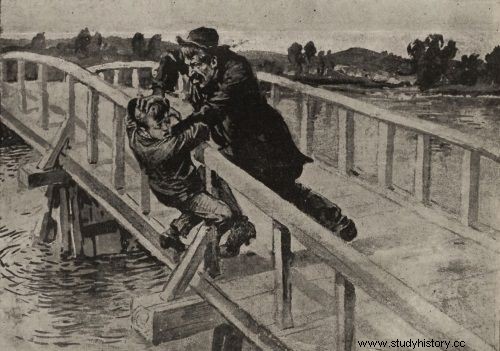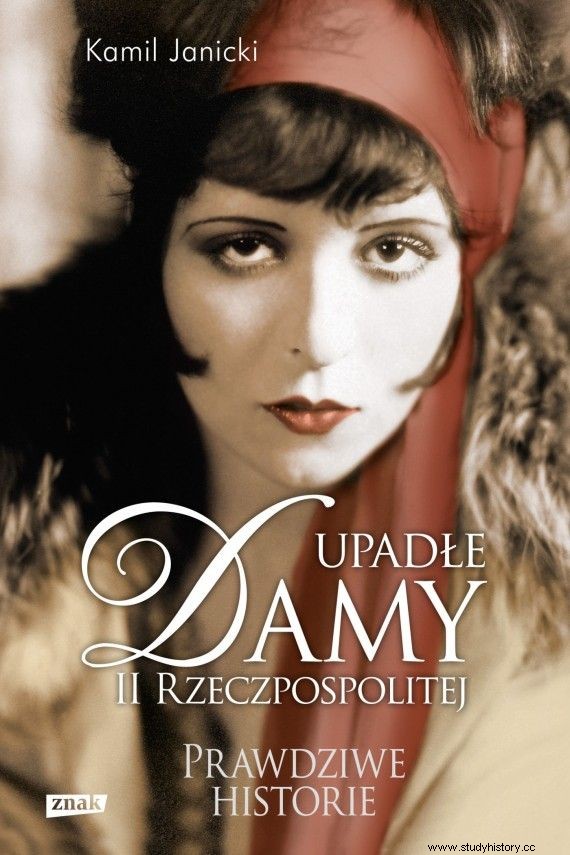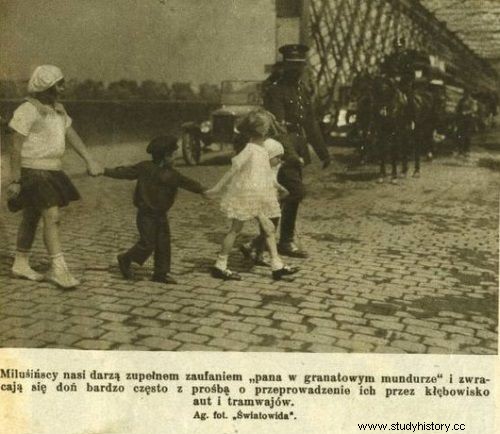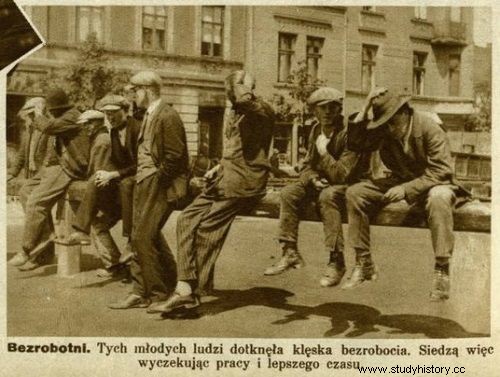In 1937, the Criminological Archives published the results of research carried out in a special prison for repeat offenders in Lubliniec. It was a bet for the worst degenerates with no chance of any improvement. As it turned out, 71% of Lubliniec prisoners were imprisoned for the first time before the age of 21.
28 percent began their first sentence when they were not even 17 years old. Overall - most of the "incorrect" undertook careers in the underworld with milk under their noses. Aleksander Mogilnicki, the author of the book "Child and Crime" published in 1925, came to very similar conclusions:
The most dangerous and incorrect are those criminals who started their activities in childhood. Already the first (...) studies have shown that there are such a great majority, that with few exceptions, the whole countless mass of the prison people consists of criminals from childhood, of convicts who entered the prison walls for the first time at 15, 10, and sometimes even 8 or 7 years.

Difficult childhood and brutal parents. The first step to a life of crime? Photograph of "Illustrated News".
Child crime was so common that the newspapers only focused on unusual cases. For example, in 1931 "Gazeta Warszawska" reported on a crime committed by Jan Panasiuk. He was a boy of small height, childish stature, looking at most 14 years old. One day he and his friend Mikołaj Starościuk went to the river to cut a wicker. Panasiuk returned from this trip alone, the body of Mikołaj was found by the water with his head cut off.
The police found a bloodied knife next to Panasiuk, and after a longer interrogation, she obtained a confession. It turned out that the boy killed his friend only because he said something bad about his parents. Thus, 16-year-old Panasiuk ended up in prison for 10 years. He must have been proud of himself because his father, grandfather and great-grandfather had spent many years in jail. Family tradition obliges.

Ruthless, decisive and deadly. The most famous criminals of pre-war Poland in the book by Kamil Janicki "Fallen ladies of the Second Republic". Buy with a discount on empik.com.
Bloody Christmas present
This is nothing compared to the case described in one of the books by Stanisław Milewski - a well-known historian of old crime. In December 1931, two seventeen-year-olds from Lutsk decided to fulfill their big dream of owning a country farm.
For this purpose, immediately after the Christmas Eve supper, they attacked the house of a random family and murdered all those gathered:father, mother, grandfather, grandmother and children. Eight people in total. This is just "American dream" in the Polish edition! From rags to ... serial killer. The District Court in Lutsk sentenced both dreamers to death by hanging.
Young criminals from Lutsk at least killed someone else's family. Perhaps they would be reluctant to deal with their own. 17-year-old Henryk Witkowski from the village of Chlinie near Olkusz certainly did not have them. After his mother kicked him out of the house for bad driving, an upset boy poisoned his entire family with arsenic . Doctors managed to rescue Witkowski's siblings. His mother died.

Policemen did not always have such good relations with children as in this photo published by Światowid ...
Murderous play in grandmother chick
Crimes were also committed by girls - for example Maria Czakówna from Krakow, who in August 1935 strangled her 15-year-old friend Julia Gierasówna. Dziennik Poranny reported:
The girls, despite their young age, led a dissolute life so that Czakówna fell ill with a venereal disease. Fearing that the secret would not be revealed by Gierasówna, she murdered her friend, strangling her with a ribbon while playing in her grandmother's play .
And somebody say that venereal diseases were not deadly in the old days!
Interestingly, the sentence in this case was extremely lenient, probably due to the sex of the murderer. The court placed her in a correctional facility until she reached the age of majority. Later she was released and was able to play her best game, hide and seek or tag.
The newspapers, however, preferred to cover the stories with a catch. Those in which the criminal was a criminal, but not entirely. The press was especially fond of the fact that desperate youths defended one of their parents. This was the case in the suburbs of Warsaw in May 1936.

The organizers of the rebellion in the Stanisławów prison in the photos published by the "Secret Detective". Few of them have reached the age of 18.
Monstrous speech defect
One day, the inhabitants of Jelonki, disturbed by loud screams, burst into the apartment of a certain Maria Pelagrini. Their eyes saw a macabre sight:a room covered in blood and the body of a man with a cruelly chopped head lying limply on the sofa. The investigation showed that it was the landlady's cohabitant, the artist-painter Zdzisław Garten. Pelegrini once posed for him as a model, but their relationship hadn't worked out for a long time. Garten came to his mistress mainly to start drunken quarrels. Reporters of Dziennik Poranny reported:
On the critical day, he got drunk again and beat up Pelegrini and her two children. Then he lay down on the ottoman and took a nap. When there was no one in the room, 14-year-old Zdziś approached the adventurer and hit him with all his might with an ax on the head. With the last of his strength Garten sprang up from the ottoman. Young Pelegrini then jumped into a chair and delivered a few more blows. Garten collapsed to the floor lifeless. The boy ran out of the room into the garden shouting:"Mom, I have freed you and us from this monster!"

Ruthless, decisive and deadly. The most famous criminals of pre-war Poland in the book by Kamil Janicki "Fallen ladies of the Second Republic". Buy with a discount on empik.com.
The perpetrator of a crime that happened in Sosnowiec in 1933 was a few years older. A fairly wealthy merchant from that city, Salomon Brandes, fell under the spell of his landlady Tauba Szwarc and abandoned his family for her. Not only did he cut off contacts with his wife and children, but he also completely stopped paying for them. The Brandesians were forced to suffer poverty, and Solomon lived in luxury with his mistress. His son finally couldn't stand it and was in a state of utmost bitterness went to Tauba's apartment.
He hoped to come to some reasonable agreement with the woman. This one, however: expressed herself contemptuously about the young man's mother, for which he shot her, wounding her in the back. The shot one followed Brandes into the corridor, and then a second shot was fired and the bullet pierced the larynx. Somehow, none of these wounds turned out to be fatal. "Nowiny Codzienne" of October 18, 1933 informed that Mrs. Taube Szwarc had only contracted a monstrous speech impediment. The court, thanks to the vigorous arguments of attorney Gelernter, sentenced the would-be murderer to just two years in prison. Unfortunately, nothing is known about the fate of the family and the romance of Salomon Brandes.

Pre-war unemployed youth in the photo of "Światowid". It was from among them that the ranks of juvenile delinquents were recruited.
A very similar case also shocked Łuck, although this time it was not without a fatal victim. The Secret Detective reported in the April 1931 issue:
The son of one of Lutsk's richest townspeople, Adrjan Charczeńko, Walenty Kharczeńko, a fifteen-year-old elementary school student, murdered his father with an accurate shot from a shotgun . He made his murder in revenge for his father's riotous life, who two years ago threw his wife on the pavement without cause and began to lose a large family fortune to various women from the underworld.
And that's the stories that the boulevards loved! For what better example can you imagine that family betrayal and neglect never pay? Remember, dear readers, for your own good:take care of your wives, take care of your children, or ... a ball in the head.
Sources:
The article is based on source materials and literature collected during the work on the book "Upadłe damy II Rzeczpospolitej".
